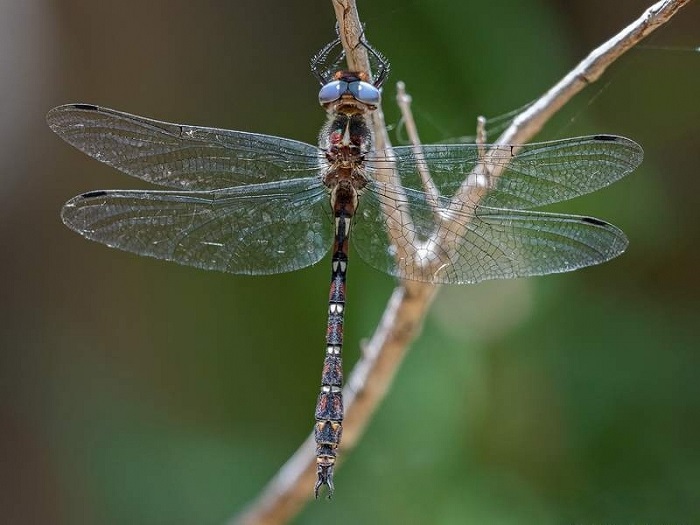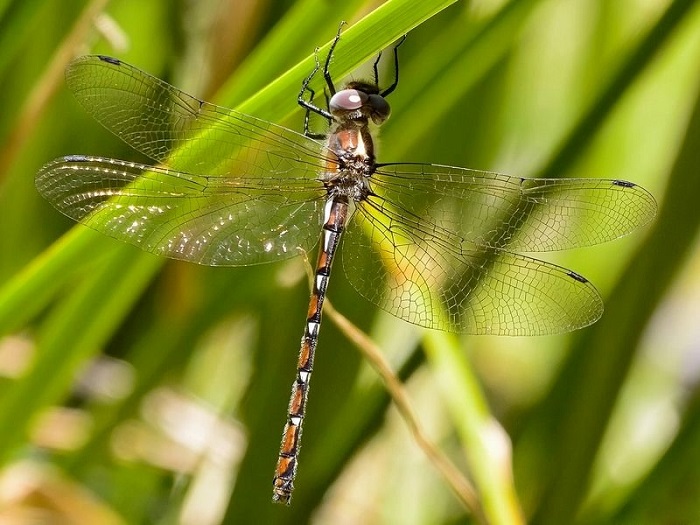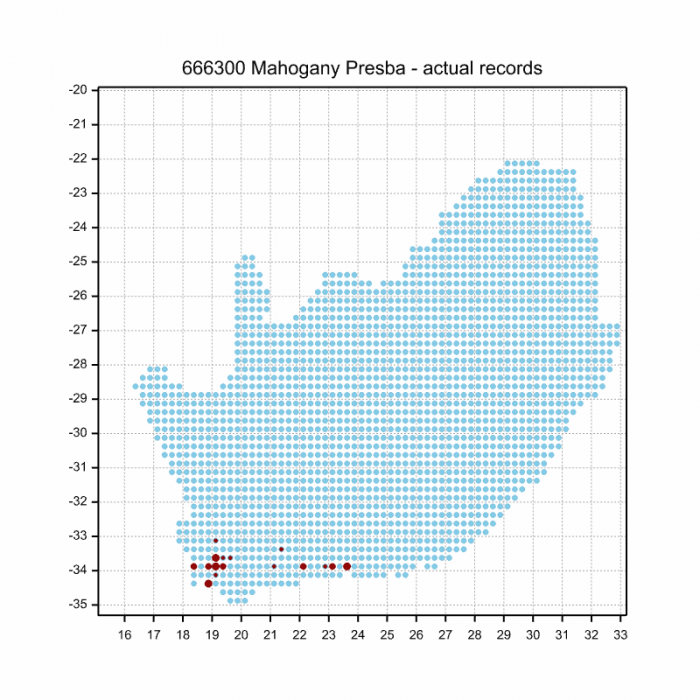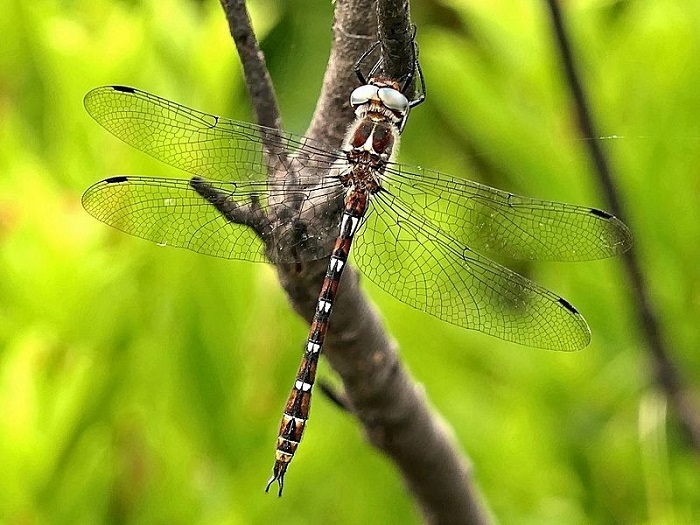Cover photo by Felicity Grundlingh.
Find the Mahogany Presba in the FBIS database (Freshwater Biodiversity Information System) here.
Family Synthemistidae
Identification

Kogelberg Nature Reserve, Western Cape
Photo by Gregg Darling
Medium-large Size
Length up to 50mm; Wingspan reaches 72mm.
The Mahogany Presba is a very distinctively coloured species. The brown thorax is conspicuously hairy with obscure black lines and markings. The abdomen pattern of cream crescents and triangles, bordered with black, is diagnostic. The sexes closely resemble one another, but females have shorter and broader abdomens. Females also lack the elongated claspers of the male.
It is most likely to be mistaken for the Rustic Presba (Syncordulia serendipator). Both species are predominantly dark-reddish brown, but Syncordulia serendipator is generally darker. The two species also have very differently patterned abdomens.
Click here for more details on identification of the Mahogany Presba.

Photo by Hesmarie Els
Habitat
The Mahogany Presba is restricted to fynbos, in rugged, mountainous areas where it frequents rocky streams and rivers with an assortment of boulders and pools. It is partial to areas where there are large bushes fringing the river. The Mahogany Presba also inhabits forested sections of streams surrounded by fynbos vegetation. It occurs between 300 and 1300m above sea level.

Photo by Sharon Stanton
Behaviour
The Mahogany Presba hunts in sustained flight as it courses up and down a chosen route along the stream. It is, however more likely to be encountered some distance from water, hunting over open fynbos vegetation. The flight is fast and direct. The Mahogany Presba hangs vertically from a branch or twig when perched.
It is most active from mid-October to late February. See Phenology below.

Photo by Desire Darling
Status and Conservation
The Mahogany Presba is a localised, rare, and little-known dragonfly. It is listed as Vulnerable in the IUCN Red List of Threatened Species. The Mahogany Presba is intolerant towards damage to its fynbos habitat and only occurs in pristine environments.

Photo by John Wilkinson
Distribution
Syncordulia venator is endemic to South Africa, where it is restricted to the mountainous regions of the Western Cape, extending marginally into the Eastern Cape Province.
Below is a map showing the distribution of records for Mahogany Presba in the OdonataMAP database as at February 2020.

Below is a map showing the distribution of records for Mahogany Presba in the OdonataMAP database as of December 2024.

The next map below is an imputed map, produced by an interpolation algorithm, which attempts to generate a full distribution map from the partial information in the map above. This map will be improved by the submission of records to the OdonataMAP section of the Virtual Museum.


Ultimately, we will produce a series of maps for all the odonata species in the region. The current algorithm is a new algorithm. The objective is mainly to produce “smoothed” maps that could go into a field guide for odonata. This basic version of the algorithm (as mapped above) does not make use of “explanatory variables” (e.g. altitude, terrain roughness, presence of freshwater — we will be producing maps that take these variables into account soon). Currently, it only makes use of the OdonataMAP records for the species being mapped, as well as all the other records of all other species. The basic maps are “optimistic” and will generally show ranges to be larger than what they probably are.
These maps use the data in the OdonataMAP section of the Virtual Museum, and also the database assembled by the previous JRS funded project, which was led by Professor Michael Samways and Dr KD Dijkstra.
Phenology



Photo by Sharon Stanton
Further Resources
The use of photographs by Desire Darling, Felicity Grundlingh, Gregg Darling, Hesmarie Els, John Wilkinson, and Sharon Stanton is acknowledged.
Mahogany Presba Syncordulia venator Barnard, 1933
Other Common names: Sapeleswalker (Afrikaans)
Recommended citation format: Loftie-Eaton M; Navarro R; Tippett RM; Underhill L. 2025. Mahogany Presba Syncordulia venator. Biodiversity and Development Institute. Available online at https://thebdi.org/2020/06/08/mahogany-presba-syncordulia-venator/
References: Tarboton, M; Tarboton, W. (2019). A Guide to the Dragonflies & Damselflies of South Africa. Struik Nature.
Samways, MJ. (2008). Dragonflies and Damselflies of South Africa. Pensoft
Samways, MJ. (2016). Manual of Freshwater Assessment for South Africa: Dragonfly Biotic Index.Suricata 2. South African National Biodiversity Institute, Pretoria

